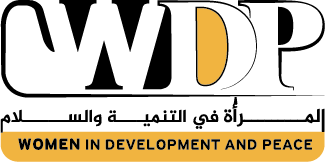Haneen Al-Wahsh – Women in Development and Peace
The education sector is one of the most affected by the armed conflict in Yemen. Starting with the suspension of academic salaries, the closure of many schools and universities, and the moral and material destruction inflicted upon it, the conflict has significantly impacted the reality of academic education in many Yemeni governorates.
Higher education in Yemen is being battered by severe waves of conflict repercussions, threatening the collapse of its educational system. This is coupled with a decline in university enrollment rates and the proliferation of private universities and parallel education on the ruins of public universities. This unregulated and unsupervised expansion has led to a decline in the quality of teaching and its descent to dismal levels.
A Late Start
The presence of higher education in Yemen is relatively recent. The year 1970 marked its beginnings with the opening of Sana’a University, followed five years later, in 1975, by the opening of Aden University.
This nascent establishment relied on support from neighboring countries, most notably Kuwait. This support included providing salaries for teaching staff recruited from outside the country, as well as establishing and equipping educational facilities.
With the unification of Yemen, the government’s interest in higher education increased, culminating in the establishment of eight public universities within a short period. According to estimates from 2004, the number of students in these eight universities reached 164,532, with females constituting 30-40%.
An Early Setback
In the early years of Yemen’s entry into armed conflict, the education sector experienced successive storms that led to its internal collapse and the crumbling of its newly established foundations. This began with the destruction of its infrastructure and the exodus of thousands of students from education, culminating in educational institutions lacking even the most basic and traditional resources.
Higher education is among the most affected sectors. As the conflict enters its tenth year, this sector continues to reel under the impact of its dire consequences. These consequences are exacerbated by the country’s political division, with two higher education ministries, one in the north and one in the south, operating with radically different visions and plans. This has led many voices to call for the neutralization of the educational process.
The rate of student enrollment in universities is declining at an increasingly alarming rate, as observers confirm. However, we were unable to determine the exact percentage due to the lack of official statistics from higher education institutions and the relevant ministry.
Higher education institutions in Yemen are suffering from a shortage of financial resources following a decline in government funding. According to the 2015 Country Report on School Independence in the Education Sector for the Republic of Yemen, Yemeni universities are funded directly from the government budget.
Yemeni universities are unable to pay staff salaries and meet their obligations to contractors, according to the results of our surveys in several Yemeni universities. This highlights the harsh reality faced by educational staff and the resulting decline in the quality of education and the deterioration of the educational system in the country.
The deterioration of the educational process is evident in the declining enrollment rates in universities and the increasing dropout rates, particularly in the humanities and social sciences.
Academics have confirmed a significant exodus from humanities departments in universities and colleges, citing various reasons. These include the dire situation of staff and academics in the education sector, the high unemployment rate among university graduates due to the suspension of recruitment programs since 2014, and the low wages of existing employees.
The collapse of the basic education system is one of the most significant factors contributing to the decline in university enrollment. Students enrolling in universities this year were in the early grades of primary school when the armed conflict erupted in 2015, the same year that the education sector experienced the worst violence in the country.
A large proportion of young people prefer to join military colleges, which are witnessing a surge in applications. This is driven by the militarization of public life and the allure of armed conflict, which has compelled a significant segment of youth to join the front lines, often as a last resort, given the skyrocketing unemployment rate and the intensifying conflict threatening forty million citizens, most of whom are young.
Female enrollment in higher education is increasing, in contrast to male disengagement. However, this increase remains marginal when compared to the proportion of female university entrants relative to female secondary school graduates, according to Dr. Faisal Al-Fatimi.
Al-Fatimi attributes the weak presence of women in academia to several factors, most notably the dominance of the tribal system in Yemen. This system prioritizes male education while forcing women into early marriage, posing a challenge to their pursuit of higher education.
He emphasizes that the limited resources of families in a society where the majority live below the poverty line hinder the aspirations of many women and curtail their educational pursuits early on.
A Bleak Reality for Both Genders
A research paper highlighting the state of higher education, published by the Sana’a Center for Strategic Studies, states: “The educational system and its staff are enduring a harsh reality. Social media platforms are rife with news of a Sana’a University professor found dead in his apartment due to hunger and thirst after days of neglect.”
The research paper emphasizes the steady decline of the educational system and the failure of university administrations across the country to pay salaries regularly, leading to a decline in the quality of education and research efforts.
Faced with the reality of suspended or irregular salaries for public sector employees, coupled with low wages, the question of the fate of education in Yemen and the outcomes of higher education elicits worrying answers.

